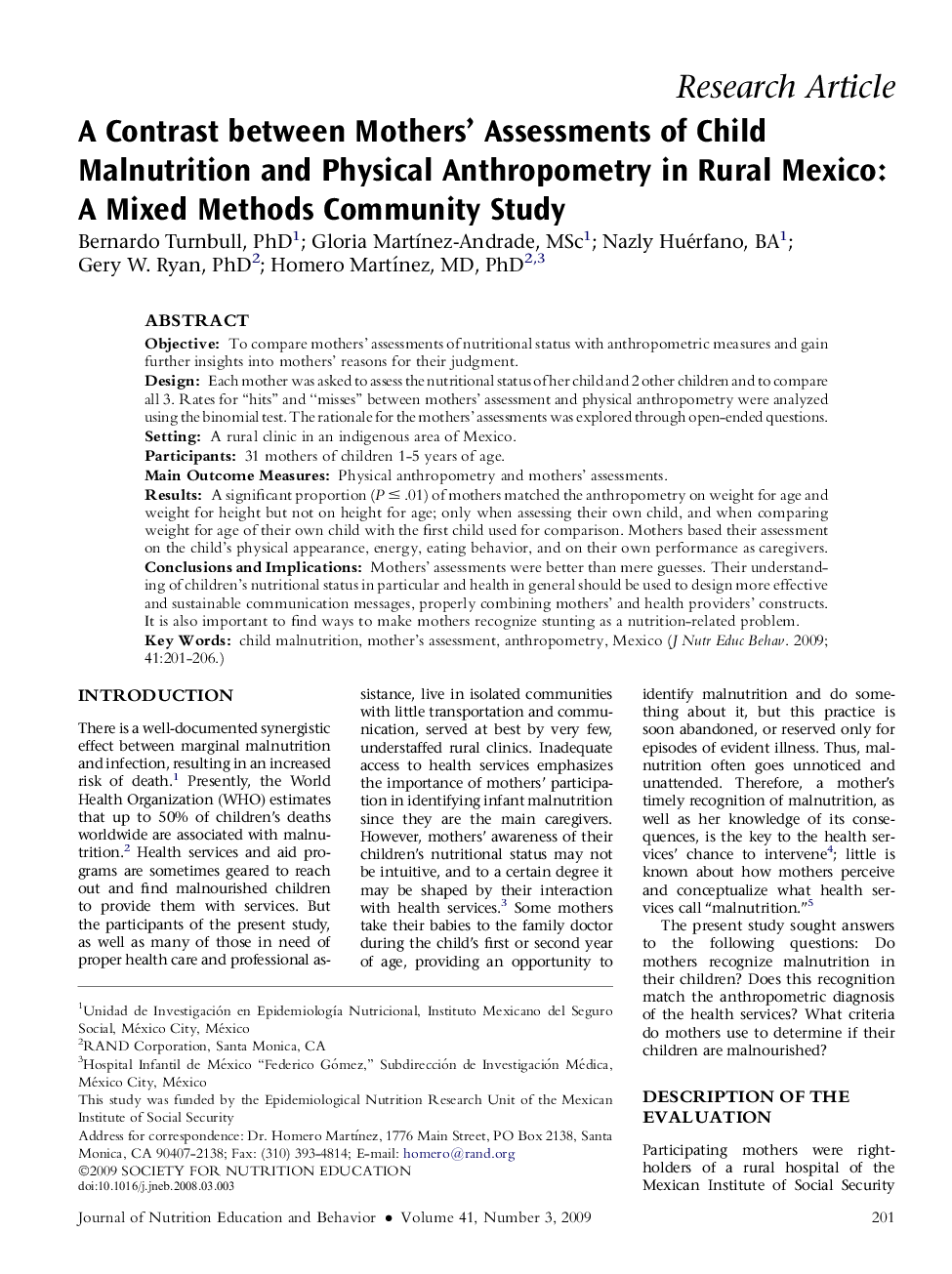| Article ID | Journal | Published Year | Pages | File Type |
|---|---|---|---|---|
| 363155 | Journal of Nutrition Education and Behavior | 2009 | 6 Pages |
ObjectiveTo compare mothers' assessments of nutritional status with anthropometric measures and gain further insights into mothers' reasons for their judgment.DesignEach mother was asked to assess the nutritional status of her child and 2 other children and to compare all 3. Rates for “hits” and “misses” between mothers' assessment and physical anthropometry were analyzed using the binomial test. The rationale for the mothers' assessments was explored through open-ended questions.SettingA rural clinic in an indigenous area of Mexico.Participants31 mothers of children 1-5 years of age.Main Outcome MeasuresPhysical anthropometry and mothers' assessments.ResultsA significant proportion (P ≤ .01) of mothers matched the anthropometry on weight for age and weight for height but not on height for age; only when assessing their own child, and when comparing weight for age of their own child with the first child used for comparison. Mothers based their assessment on the child's physical appearance, energy, eating behavior, and on their own performance as caregivers.Conclusions and ImplicationsMothers' assessments were better than mere guesses. Their understanding of children's nutritional status in particular and health in general should be used to design more effective and sustainable communication messages, properly combining mothers' and health providers' constructs. It is also important to find ways to make mothers recognize stunting as a nutrition-related problem.
